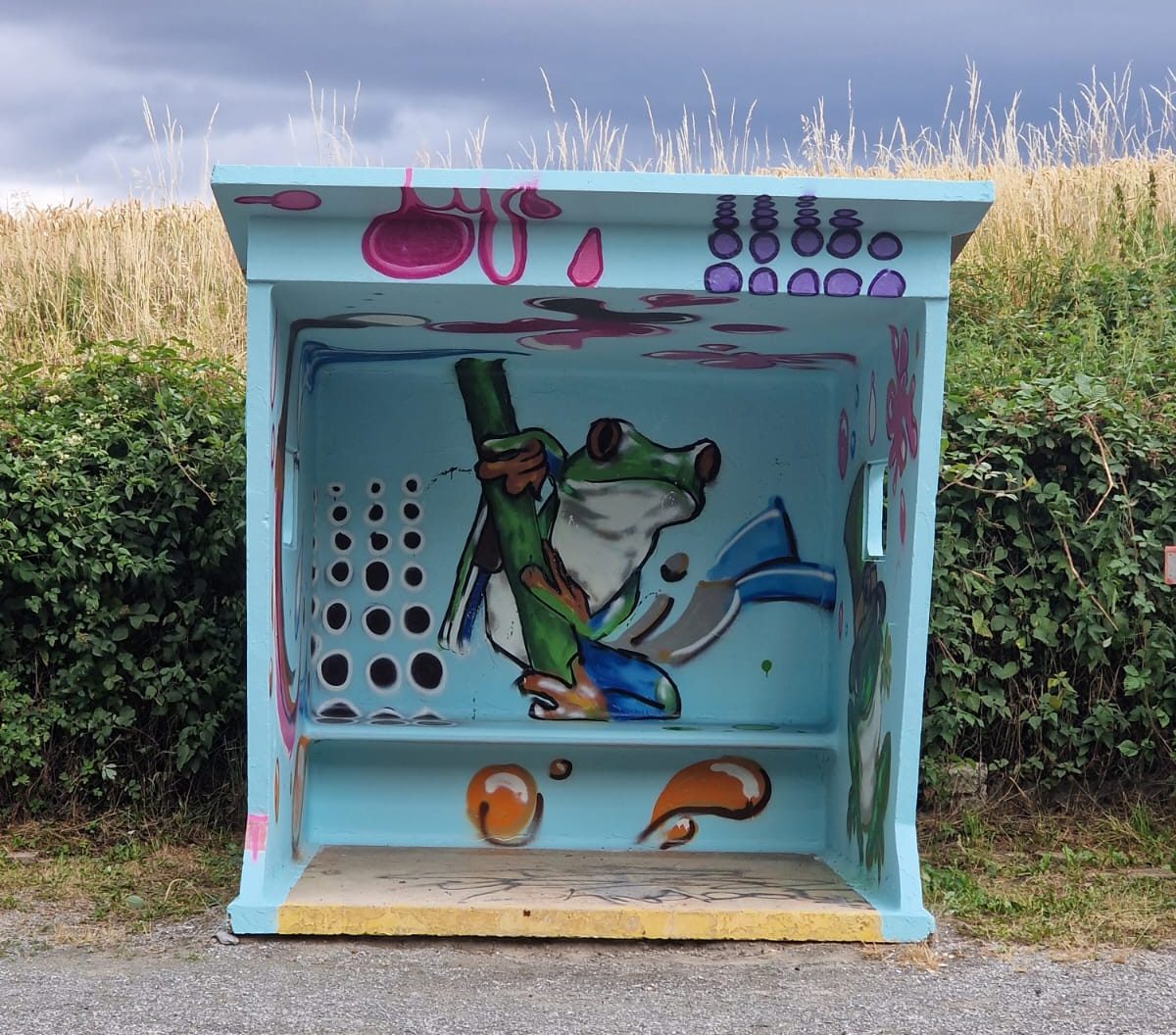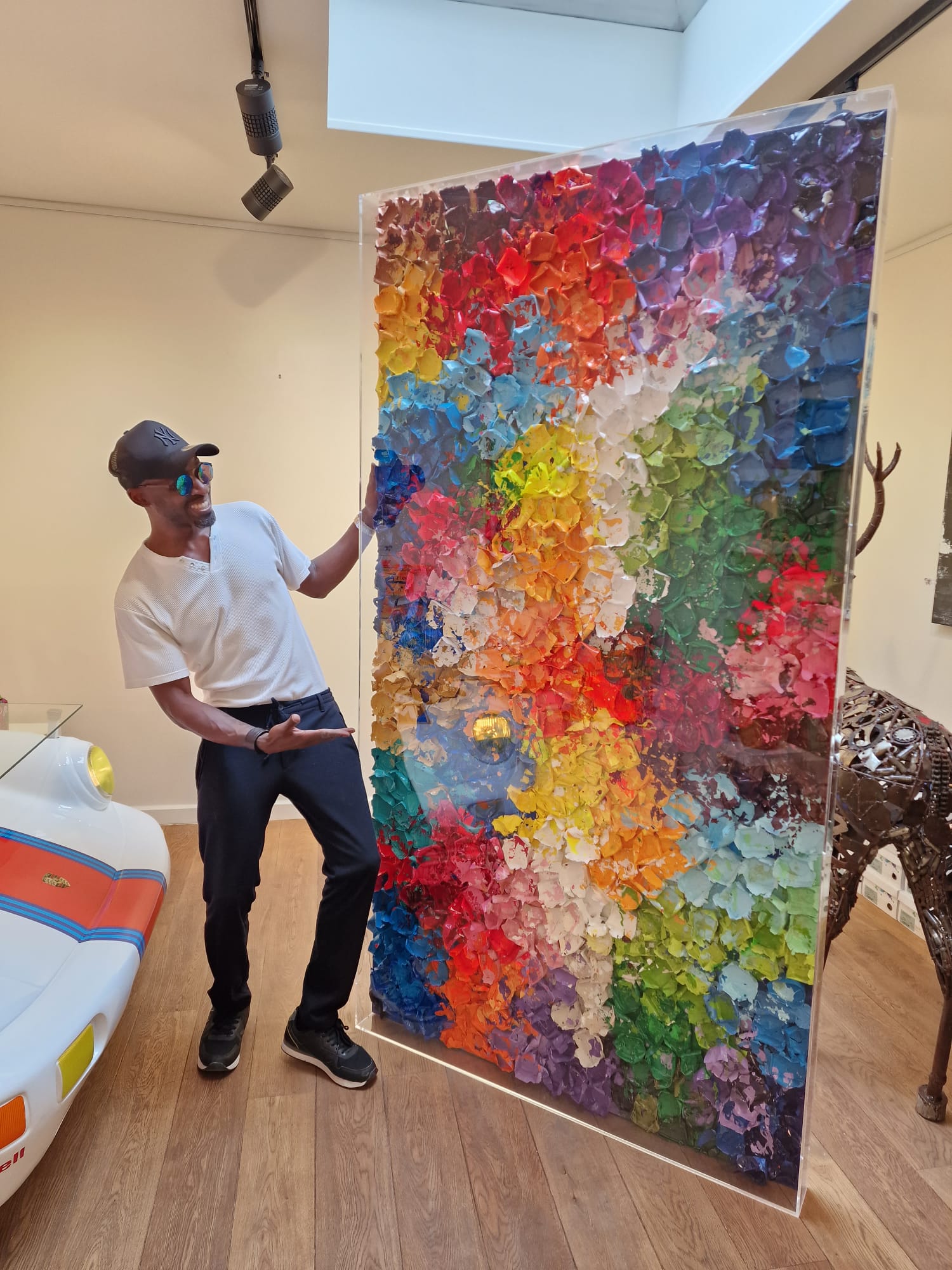SNCB has employed Rwandan artist Nitra Ntiburamira to cover graffiti on railway infrastructure with original artwork. Ntiburamira leads a team of several artists working under his name and has already painted several shelters in Brussels with nature-themed patterns and friendly wildlife.
The Belgian railway company asked the artist to choose bright colours and avoid using aggressive hues like red and black to create a more pleasant atmosphere for travellers.
The creative team also committed to doing yearly maintenance checks on train station artwork to ensure it has not been damaged by weather or vandalism. Both SNCB and Ntiburamira are counting on the fact that others will respect the unwritten street-art code of conduct: do not paint over another artist's work.
As to the question of how to define graffiti as opposed to real art, Ntiburamira believes that "Most of the time graffiti is just lettering and signatures, not an image because vandals are in a rush in case police arrive. The big difference is that professional artists usually paint a single subject."

Credit: Nitra Ntiburamira
A choice between criminality and creation
Given the brilliant colours, whimsical patterns, and happy-looking wildlife in Ntiburamira's style, one would never imagine his difficult upbringing. Ntiburamira was born in Rwanda, where at the age of eight he lost his parents and two sisters to the Rwandan genocide. He was then taken into a foster home in Belgium, where he remained until he was eighteen.
"I could choose one of two ways," the artist said. "I could choose the easy way—going into criminality and hanging out on the street. But I have a different kind of character so chose the hard way to make something out of my life. Even though I felt as if I was alone in the world."
Ntiburamira continued attending school even after leaving the foster home, working on the weekends to pay for his education. He did not want to work traditional student jobs like waiting tables at restaurants, so instead he began selling his artwork on the streets. He got his degree in architectural design, began working and continued painting on the side.

Credit: Nitra Ntiburamira
From a hobby to a career
In 2017, Ntiburamira's life changed. While painting a mural on the street he was spotted by a diamond trader who immediately fell in love with his style. The trader invited Ntiburamira to showcase his art at his diamond show in Monaco, all expenses paid.
When Ntiburamira returned to Belgium, his boss told him that he could not continue working and painting as much as he did. He had to choose.
Related News
- Judith Vanistendael: Shattering glass ceilings in the world of comics
- Northern Irish students granted €2 million of Erasmus+ funding
- Brussels nightlife: Will heritage label save iconic venues?
"It was the hardest decision to make," the artist admitted. As earlier in his life, Ntiburamira chose the more difficult path and became an artist full time. At first no one wanted his vibrant colors in their art galleries. So after surviving both Covid and the energy crisis, Ntiburamira opened his own gallery in Knokke, where now he also showcases the work of other artists.
"It was my biggest dream to become an artist, and then one day I woke up and realized that I'd reached my dream," Ntiburamira said gratefully. "Now I want to give something back to the universe. I know how it feels to work hard for a dream. Sometimes you need that little push."

Credit: Credit: Nitra Ntiburamira

